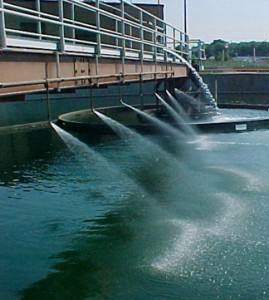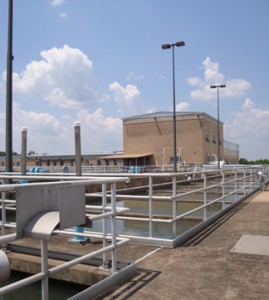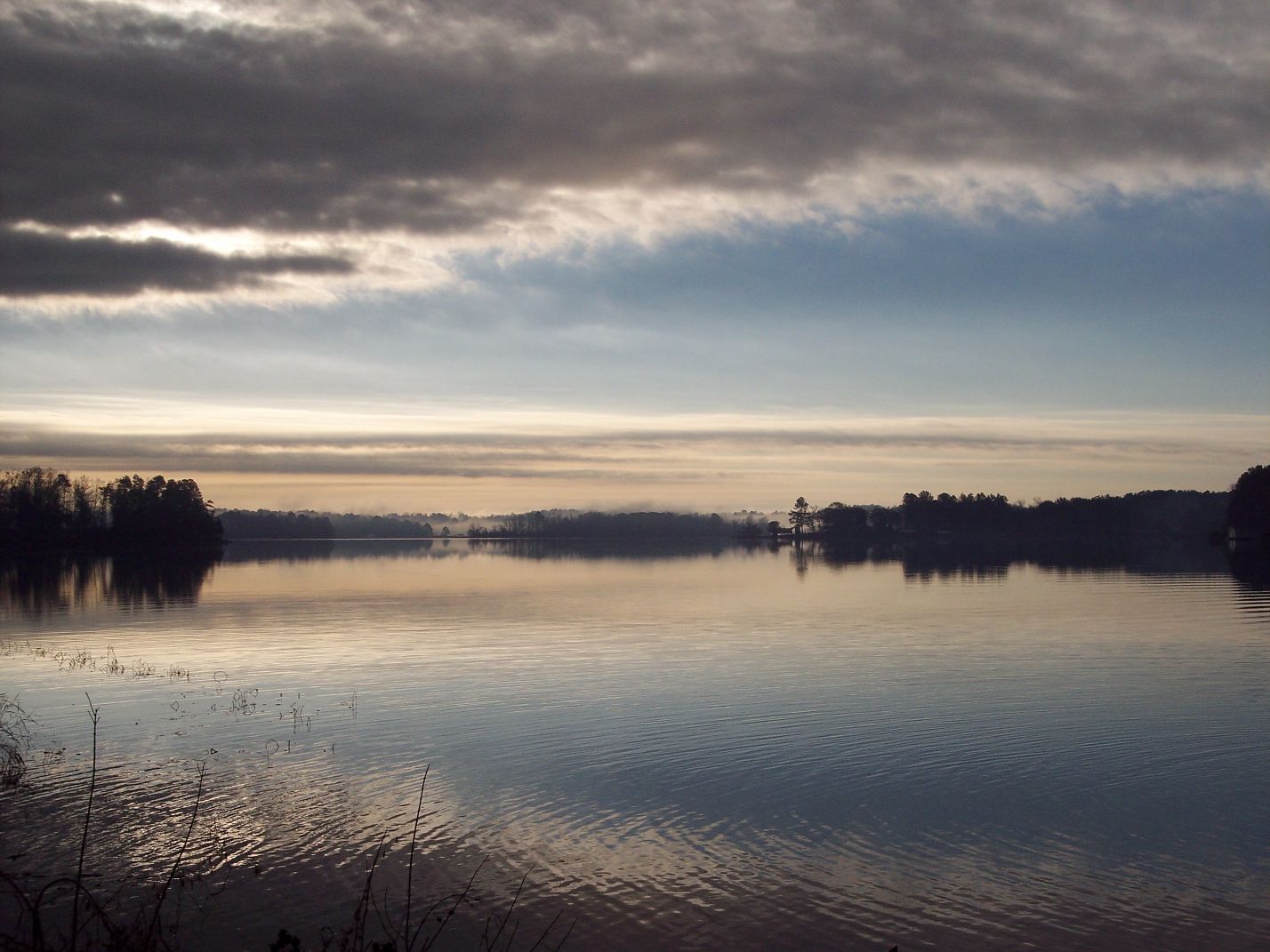1. SUMMARY
The Ed Love Water Treatment plant was completed in 1976 and updated in1995. There is an on site chemistry and bacteriological lab to run constant chemical screens on the drinking water. This is to ensure that the drinking water of Tuscaloosa County is safe. The EPA puts limits on how much of certain chemicals, like chlorine or iron, can be present. These chemicals are harmless in very small quantities. Some contaminants are from industrial sources, while others are used in the purification process. Here is a video explaining how the typical water treatment facility operates: [1] [7]
The Safe Drinking Water Act (SDWA) was passed in 1974. It required strict regulations on drinking water. The Ed Love Treatment Plant was created only two years after the SDWA. The Act was amended in 1996 to require stricter contaminant requirements and help spread internal information about drinking water to the community. [1]

Water Treatment Tank. Credit: http://www.almonassociates.com/index.php?page=wastewater-treatment-plant-expansion
- ECONOMIC IMPACT
According to the City of Tuscaloosa’s 2014 annual report on water quality, the Ed Love plant is a typical treatment plant, like the one in the embedded video above. According to the EPA, the approved method of purifying water involves five steps: coagulation, sedimentation, filtration, disinfection and storage. Both of the Tuscaloosa water facilities use these five steps. The Ed Love plant treats 45.7 million gallons a day. The Jerry Plott plant operates in the same way, but with slightly different chemicals. The Jerry Plott plant treats 14 million gallons a day. According to the report, the water made at both sites is virtually identical. [2] [5]
Here is a video from the Ed Love plant that chronicles a repair job. This video offers insight into the operation of the plant and how much this plant means to the community. [8]
The Ed Love facility serves over 200,000 citizens in the Tuscaloosa area. The plant runs 24 hours a day, 7 days a week, 365 days a year. Thirty-six full-time employees maintain the plant. All employees are highly trained. Operators must pass the Alabama Department of Environmental Management Grade IV examination every three years. Biologists must pass a proficiency exam every six months. [1] [2]
The plants feed water to 3,358 different public fire hydrants through the region. They are responsible for flushing the hydrants. They maintain a strong relationship with the local fire departments. The Ed Love facility produces clean and potable water that is used by the University of Alabama, the local community and all area businesses. Clean water is absolutely essential for the well-being of our community. How well does the Ed Love plant perform, according to the EPA? [2]
- HISTORICAL ENVIRONMENTAL IMPACT

On Top of the Tank. Credit: http://www.almonassociates.com/index.php?page=ed-love-water-treatment-plant-hypochlorite-tank-building
The EPA inspects the facility and employees once every two years. They release an annual water inspection report on the City of Tuscaloosa webpage. For example, in 2014 no EPA violations of microbiological, radiological, inorganic chemicals, disinfection by-products, lead, copper, organic chemicals or unregulated contaminants in drinking water. Only 6 of 2,569 samples were positive for Total Coliform ( 0.23 percent). No samples of E. Coli were found. [2]
The EPA began releasing publicly available annual reports in 2005. The reports detail how the local water matches up to regulations on dozens of different chemicals from the EPA. Since 2005, there have been two violations. In 2007, there was a violation of turbidity (or cloudiness) in some of the samples, although 99.7 percent of the samples passed inspection. In 2008, there was an excess of chlorine for 4 hours on January 1st. This water diluted into another water source. No adverse health effects were every discovered. [3] [4]
Our drinking water comes from Lake Tuscaloosa, a man-made lake that holds over 40 million gallons of water. Lake Harris and Nicol are used for industrial and back-up purposes. Lake Tuscaloosa was built in 1970 and holds forty billion gallons of water. Lake Nicol was built in 1956 and holds three point three billion gallons of water. Lake Harris was constructed in 1929 and contains one billion gallons. [2] [6]
Sources:
[1] http://www.tuscaloosa.com/Government/Departments/Water/water-treatment
[5] http://water.epa.gov/learn/kids/drinkingwater/watertreatmentplant_index.cfm
[6] http://www.tuscaloosa.com/Government/Departments/Water/Lakes/lakes-div-main
[7] http://www.youtube.com/watch?v=9z14l51ISwg
[8] http://www.youtube.com/watch?v=ENgwU2-keoM
-Henry Weatherly, 2014



